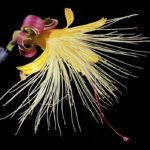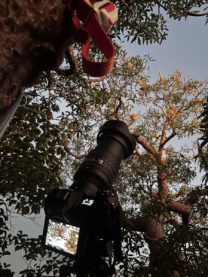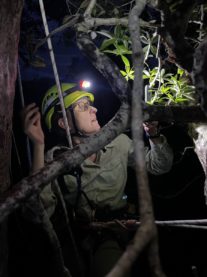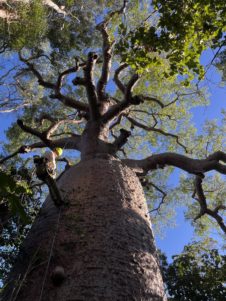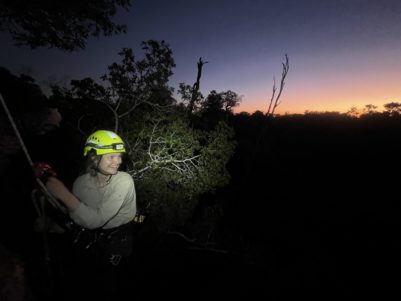
Adansonia grandidieri
Baobabs (Genus Adansonia) are large deciduous trees with an emblematic shape. Six species are endemic to Madagascar.
During our research in the area of the the study site of the German Primate Center in the Kirindy Forest (near Morondava) we encounter the following three species:
Boababs grow slowly and are among the most long lived trees on the planet. Large individuals are estimated to be hundreds of years old, but ages up to 1900 years have been reported.
At the end of the rainy season, Baobabs grow spectacular flowers. The flowers are reproductive only during one night and their full opening just after sunset takes only ~5 minutes.
The flowers of the Malagasy Baobabs are thought to be pollinated mainly by hawkmoths (Coelonia solanii), but bats and forkmark lemurs (Phaner furcifer) and fat-tailed dwarf lemurs (Cheirogaleus medius) have been reported to interact with the flowers (Baum 1995).
The fruits are ripe at the end of the dry season. They are brown, egg-shaped, hard shelled structures, containing kidney-shaped seeds imbedded in a dry flowery matrix.

Freshly extracted seeds of Adansonia grandidieri, compared to a sanded seed prepared for germination.
It is thought that the germination and dispersal of Baobab seeds were originally facilitated by passing via the digestion system of now extinct giant lemurs or the elephant bird (also extinct in the 17th century). Today, none of the extant Malagasy mammals or birds are large enough to be able to participate in the dispersal of the seeds. Currently, the number of Baobab trees is quickly declining due to deforestation, drought or inundation (rice cultures).
For hobby gardeners, Baobabs are notoriously hard to grow. It is suggested to prepare the seeds by filing the dark inner hard shell to a thin layer and by immersing the seeds for at least 24h in hot water before planting them in sandy soil at a warm location. Instructions can be found here, here or here.

